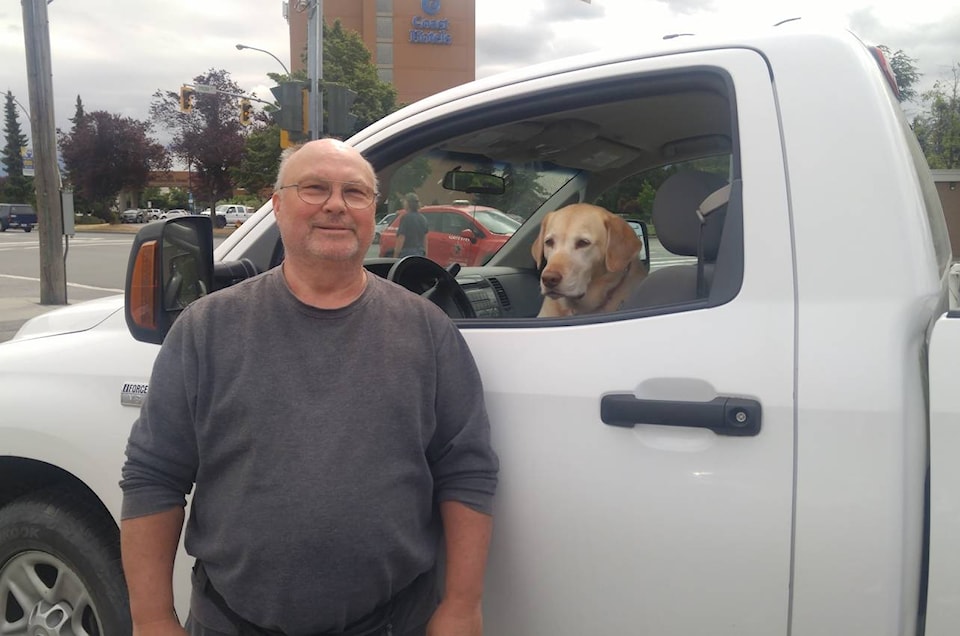Summer may be quickly approaching, which has many itching to hit the open road, but as a popular Facebook meme states, “These aren’t ‘ride around listening to music’ gas prices.”
| As of June 5, GasBuddy.com listed B.C. as having the most expensive fuel in the country. |
And while it’s no surprise that British Columbians across the province have been hard hit by the recent increase in gas prices, many in the Valley are wondering why Chilliwack appears to be paying more at the pumps than those filling up in nearby communities.
“I can’t figure out why we’re paying so much,” said Chilliwack’s Bruce Holland while holding a handwritten list of the average gas prices for Chilliwack, Hope and Abbotsford.
Gas prices are determined by a variety of factors, and the three factors that impact the cost the most are the cost of crude oil, the wholesale price of gasoline, and retail competition, with a mix of taxes and retailer costs thrown in to round out the amount on the pump.
However, with the proximity of communities within the Fraser Valley, Holland believes the prices should be fairly static across the region, yet he’s finding they’re anything but, so he’s resorted to commuting to ensure he gets the best price he can on the fuel he puts into his white Ford pickup truck.
| A three-month comparison from GasBuddy.com shows Chilliwack typically pays more at the pump than its neighbours. |
RELATED: Gas prices keep rising
“Are you kidding me? I’m not going to pay (Chilliwack prices) when I can get it (cheaper elsewhere),” said Holland, who lives in Chilliwack’s north end. “So now I buy my fuel in Abbotsford.
“(But) it just doesn’t make sense to me,” continued Holland, who points out Metro Vancouver’s prices have been only a few cents above Chilliwack’s, yet their fuel is supposed to have a $0.17 tax levied on every litre sold.
“It’s stupid pricing, if you ask me, and I don’t understand where its coming from!” Holland exclaimed. “I think it’s greed. Plain and simple.”
And while the answer may not be so simple, it’s also not an easy one to answer: the Chilliwack Progress reached out to both Petro-Canada’s and Shell’s head offices, but did not receive any comment.
However, Petro-Canada’s website explains how gasoline, which is sold at the same base price per litre in each province, but has regional, provincial, and federal taxes added afterwards, often varies in price from one location to another. Yet, it’s often the retail location that decides on the final pump price.
With almost a 100 different fuel brands on the market, and almost 70 different retailers, it’s easy to see why sites like GasBuddy.com has become such a necessary aspect of purchasing fuel.
“(Abbotsford) is only 15- or 20 minutes down the road … and I use less than an eighth of a tank going there and back,” said Holland, who says the 70-kilometre drive ends up being cheaper than paying more at local pumps.
RELATED: B.C. gas prices to hit highest levels in years: GasBuddy forecast
It’s a delicate balance of finding the appropriate retail pricing, says the Canadian Fuels Association website. Gas retailers are continuously balancing the need to be competitive with their need to maintain a viable retail margin, which can be especially difficult in B.C., where the demand for fuel is more than three times the capacity of the province’s two refineries.
“(But) it’s been this way for a while,” said Holland. “I used to be able to top up my tank for about $90 bucks, now it costs me upwards of $120 to $140.
“(Distance) shouldn’t make any difference,” continued Holland. “If Hope is $1.46, and some places in Langley are the same price or cheaper, you look at (our costs) and ask, ‘Why are we the priciest?’
“These prices make us change everything! You’ve got to change your budget because the food prices are higher now, too. Everything changes.
“And we all need to watch our pennies a little bit closer, I think.”
To maximize every drop of gas in your tank, the Canadian Automotive Association (CAA) recommends the following while driving:
- Accelerate gently: the harder you accelerate, the more fuel your vehicle consumes;
- Coast to decelerate: According to studies, “jackrabbit” starts increase fuel consumption by 39 per cent;
- Anticipate traffic: Planning accordingly can help maintain your vehicle’s momentum and reduce fuel usage;
- Avoid high speeds: Speeding increases the amount of power required to push your vehicle through air resistance: diving at lower speeds can reduce fuel consumption;
- Maintain a steady speed: Varying your speed between 75 km/h to 85 km/h every 18 seconds can increase your fuel consumption by 20 per cent.
@SarahGawdin
Sarah.Gawdin@theprogress.com
Like us on Facebook and follow us on Twitter.
